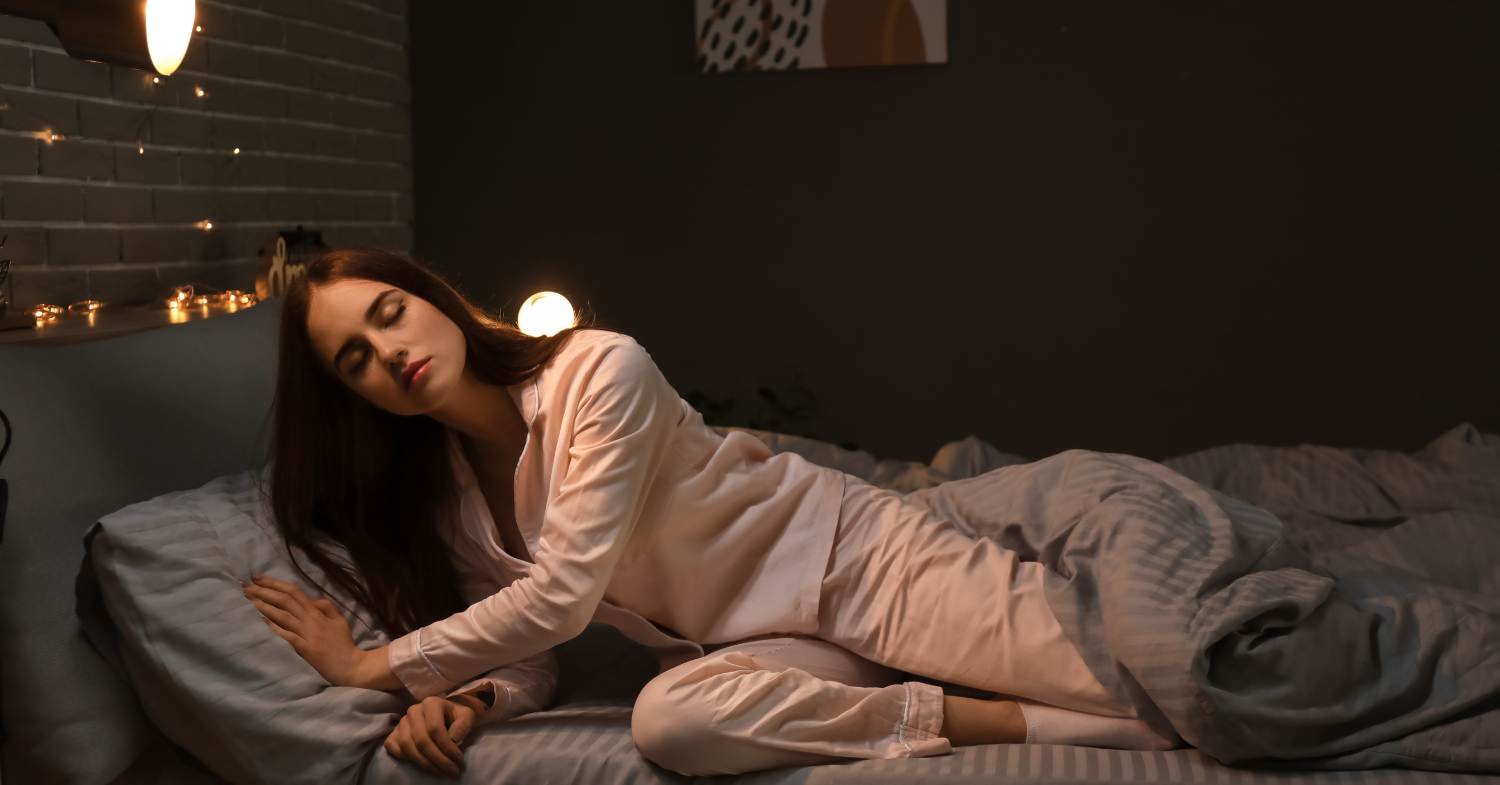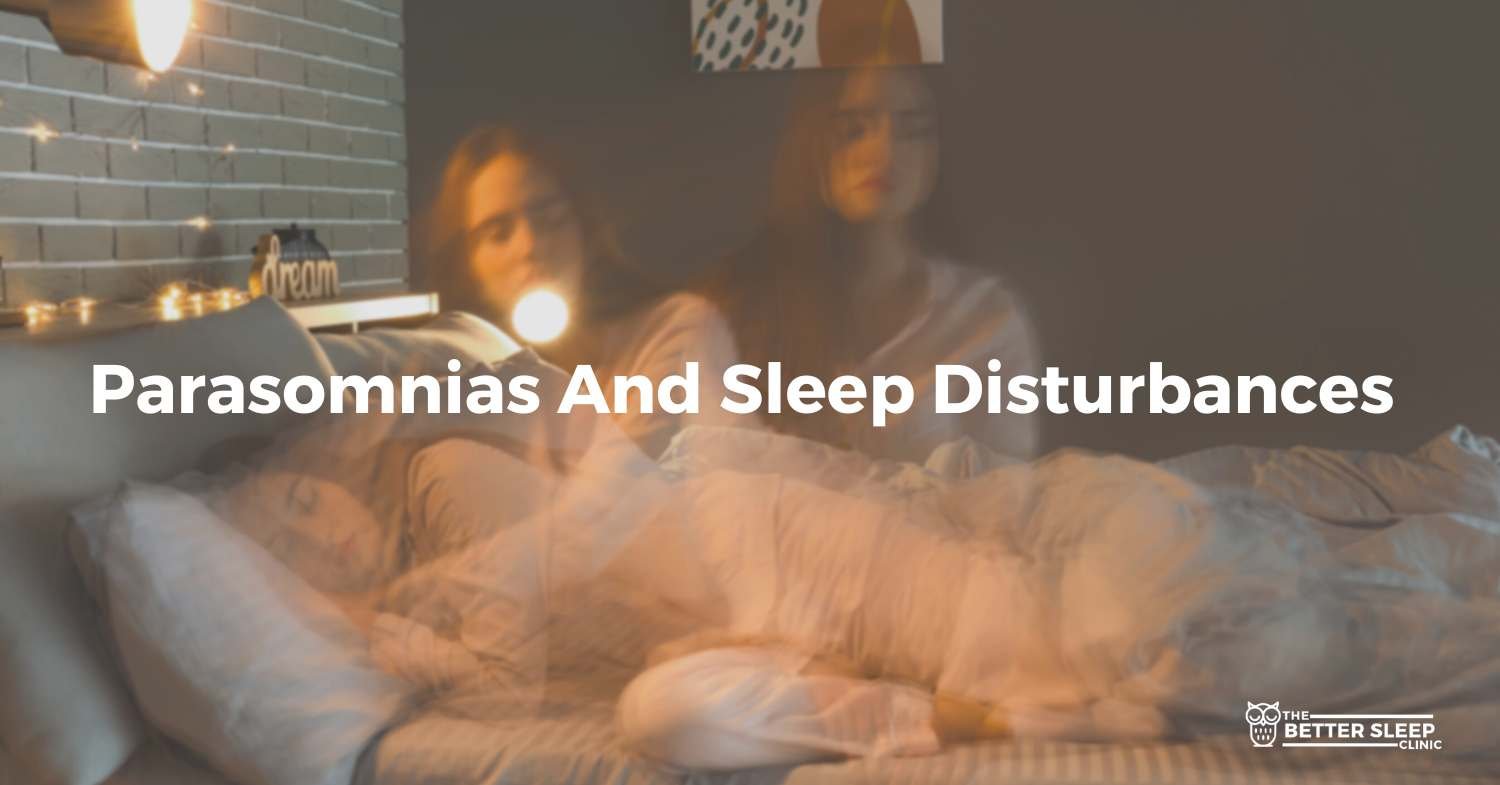
Parasomnias And Sleep Disturbances
Table of Contents Hide
What Are Parasomnias?
Parasomnia is an umbrella term that covers a group of sleep disorders characterised by a range of unusual behaviors that individuals can experience prior to sleep onset, during sleep, or while transitioning between wakefulness and sleep states.
They can occur during non-rapid eye movement sleep (NREM), rapid eye movement sleep (REM), or during transitional states between waking and sleeping.
Abnormal activities that occur during sleep can include movements, behaviors, emotions and more. These behaviors may differ in their symptoms, intensity, and frequency.
While usually not a cause for concern, some behaviours can be dangerous, leading to injury, sleep deprivation and psychosocial distress for the patient, bed partner and those around them. In these cases the parasomnia may be considered a clinical disorders and require treatment.
Parasomnias can occur in isolation or with other sleep disorders such as insomnia, obstructive sleep apnoea, restless legs syndrome and circadian rhythm sleep disorders.
What Causes Parasomnias?
Sleep medicine experts now believe that parasomnias happen during periods when the brain shifts from wakefulness to sleep and vice versa, as well as during changes between rapid-eye-movement (REM) and non-rapid-eye-movement (NREM) sleep cycles.
During these transitions between sleep and wake states, the brain can enter into a state of dissociation that lies somewhere between the two ends of the sleep-wake spectrum rather than neatly being in one state or the other. This results in the parasomnia.
Parasomnias are more common in children than in adults. Nevertheless, they have been reported in people of all ages.
What Are The Different Categories Of Parasomnias?
There are a range of parasomnias.
Different parasomnias present distinct symptoms and criterion for medical diagnosis and are generally tied to different kinds of sleep that are experienced during the night.
During sleep, a person will cycle through stages of NREM and REM sleep in recurring intervals of about 90-110 minutes throughout the night. Thus, parasomnias are classified into three major categories:
those related to Non-REM sleep (NREM Parasomnias );
those linked to REM sleep (REM Parasomnias ); and
Other miscellaneous behaviors (Other Parasomnias ).
The different parasomnia types that arise from different sleep stages are outlined below:
Non-Rapid Eye Movement ( NREM )-Related Parasomnias
Non-rapid Eye Movement ( NREM ) sleep ( stage one ) is the initial phase of a person’s sleep cycle and is typically referred to as "light" sleep. As sleep progresses, NREM sleep becomes deeper, moving into stages two and three ( deep sleep ) of NREM sleep. During this time, a range of parasomnias can occur that are known under the umbrella term - disorders of arousal.
Disorders Of Arousal
Disorders of arousal are the most prevalent NREM-related parasomnias, featuring recurrent episodes of incomplete wakefulness and a reduced ability to respond to external stimuli or comprehend situations while they occur.
Individuals affected by these parasomnias typically have no recollection of their activities.
Such parasomnias include confusional arousals, sleep walking, sleep talking, night terrors and sleep related eating disorder:
Confusional Arousals
Individuals who suffer from confusional arousals present with mental confusion or disoriented behavior in bed. Most subjects display minimal autonomic arousal such as dilation of the pupils, increased heart rate, rapid breathing, and/or sweating.
This condition is also referred to as Elpenor syndrome.
Sleepwalking
Also known as somnambulism, sleep walking is a phenomenon that involves people leaving their beds and showing minimal awareness of their environment while asleep. Complex behaviors, such as moving or using objects, may be present in some cases.
Associated risks involve loss of balance or collisions with other objects. As a result, it is vital to promote safe sleep practices to reduce the likelihood of any potential harm.
Night Terrors
Individuals who suffer from night terrors ( or sleep terrors ) may abruptly scream while in the midst of their sleep; however, most remain unresponsive to outside stimuli.
Upon awaking, they typically will possess no memory of the incident. In general, an episode of night terror is short, lasting less than a few minutes.
Sleep-Related Sexual Behaviours
(Sexsomnia )
Sleep-related sexual behaviors, sometimes referred to as "sexsomnia," involve unusual and often aggressive sexual activities manifested during sleep. These may include masturbation, initiating intercourse, or making sexual noises.
Sleep-Related Eating Disorder ( SRED )
Sleep related eating disorder is a condition defined by episodes of eating that occur during arousals from sleep.
During the episodes, the affected individual typically demonstrates reduced awareness and often has no recollection of their actions or what they have eaten. SRED presents several potential hazards, including the ingestion of toxic substances, bodily harm due to cooking or food preparation, and adverse physical effects stemming from overconsumption of unhealthy or excessive amounts of food.
Rapid Eye Movement (REM )-Related Parasomnias ( REM Parasomnias )
After the initial stages of non-rapid eye movement (NREM) sleep, a person will experience a period of rapid eye movement (REM) sleep.
During this stage of sleep, an individual's eyes dart back and forth beneath their closed eyelids quickly, accompanied by accelerated breathing, increased heart rate, elevated blood pressure, and brain activity on an EEG that closely resembles brain activity while awake.
Nightmare Disorder
Nightmares are a frequent and disruptive occurrence during Rapid Eye Movement (REM) sleep, and can be seen across all ages.
Typically linked with episodes of stress, anxiety, or trauma, these vivid and frightening dream sequences cause the individual to awaken in full alertness, with intense recollection of their dream's contents.
Nightmares can result in immense feelings of fear or distress that can lead to significant sleep disruption and daytime consequences.
REM Sleep Behavior Disorder ( RDB )
REM sleep behaviour disorder is a condition characterized by abnormal, often violent physical movements and vocalizations during REM sleep, typically considered reactions to dreams.
This disorder usually occurs in individuals aged 50 or older and is caused by a disruption in the muscle atonia (relaxation) that occurs during REM sleep.
Owing to the potentially violent behaviour of individuals with this condition there is significant risk of harm and injury to bed partners.
Sleep Paralysis
People with recurrent isolated sleep paralysis experience complete muscle immobility during the onset of sleep or as they awaken, typically lasting a few minutes. Such episodes can trigger intense anxiety or distress when falling asleep.
Other Types Of Parasomnia
This category of parasomnias covers behaviours taking place during the shift from sleep to wakefulness, as well as those that can manifest in both NREM and REM sleep. These include:
Exploding Head Syndrome
Otherwise known as Sensory Sleep Starts, Exploding Head Syndrome is a condition in which individuals perceive a sudden loud noise or an intense explosion within their head as they awaken from sleep. Accompanying this sensation may be a vision of a flash of light, although it is not always present.
These occurrences usually have the potential to leave a person feeling apprehensive and panicky. Additionally, multiple episodes can occur over the course of a single night.
Hallucinations
Individuals who suffer from sleep-associated hallucinations may encounter visual, auditory, tactile, or kinetic symptoms as they drift into sleep (hypnagogic) or after waking up (hypnopompic).
In particularly severe cases, these hallucinations may cause the patient to get up from bed in an effort to flee their perceived reality. Though usually short-lived, sleep-related hallucinations can sometimes last for several minutes after a person has awoken.
Sleep Enuresis ( Bedwetting )
Sleep Enuresis, more commonly referred to as bedwetting, refers to the involuntary release of urine during sleep. It is particularly common in young children and is classified as a parasomnia if it occurs in individuals at least five years of age or older and happens multiple times over a three-month period.
Primary sleep enuresis is when a person never wakes up feeling dry, and secondary sleep enuresis is seen when an individual had not experienced bedwetting episodes for six months prior to the initial episode occurring.
Written By The Better Sleep Clinic
Reviewed By Dan Ford, Sleep Psychologist




